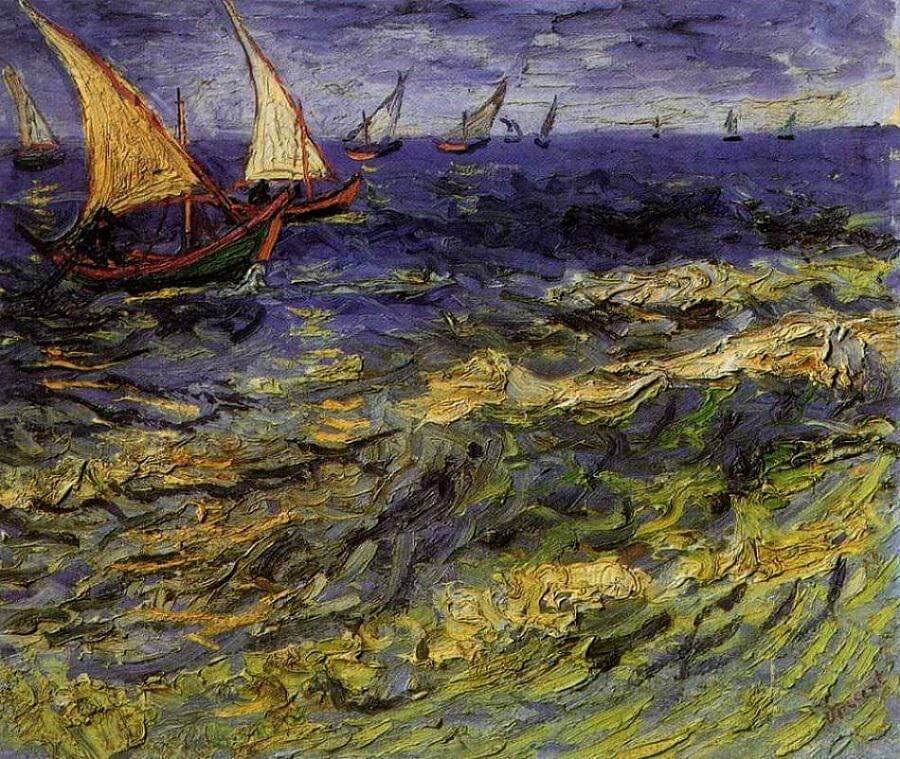Seascape at Saintes-Maries, 1888 by Vincent Van Gogh

The thickness with which Van Gogh applied his paint in this energetic scene has built up a very textured and almost three-dimensional quality to the picture surface. He frequently used this approach, loading his brush with enormous quantities of thick paint that were then rapidly daubed on to the canvas. There is great rhythm through the application of paint, which was one of his defining qualities in these later works.
The waves in the foreground, for example, have been created through a series of swift strokes that appear to swell from left to right, reflecting the motion of the water itself. The yellow-white foam that boils on the crest of the waves is practically tangible, while the boats bow into the frothing surf, battling through the waves with determination. He has again used a minimal palette, so that the entire picture appears drenched in a wet haze of moisture. It is all about the wind, water and raging elements, and positively pulsates with life, Saintes-Maries was a place that he was inspired by, and this quality of vigorous enthusiasm is very apparent in many of the paintings he made here.




















